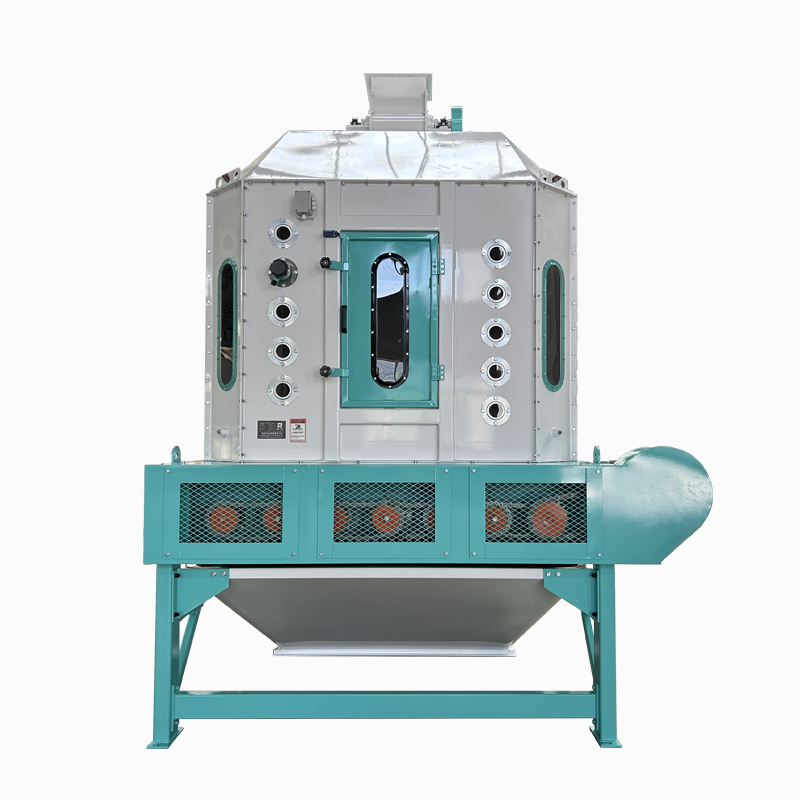What happens after pelleting in feed pellet production is just as important as pelleting itself. Modern coolers have always been counterflow, which makes sense in feed mills. This is why this cooling process is so effective for the quality of the final product.
Cooling Challenges in Feed Pellet Production
Feed pellets produced directly come out of the pellet mill at a temperature of 70-90°C, with a relative moisture content of 15-17%. Lack of sufficient cooling:
Pellets are soft and prone to breakage
Excessive moisture can lead to mold growth
Loss of nutrient stability
Significantly reduced pellet shelf life
3 Reasons Counterflow Cooling Works Best
Gentle Yet Effective Temperature Control
Gradually reduces pellet temperature
Prevents thermal shock that causes cracks
Maintains pellet structure integrity
Superior Moisture Management
Removes 3-5% excess moisture
Achieves ideal 10-12% final moisture
Prevents clumping during storage
Unmatched Consistency
Every pellet receives equal cooling
No "hot spots" in the cooling column
Uniform quality throughout batches
How does it work? (In simple terms)
As can be seen, hot particles are added at the top and cold air is added at the bottom:
Particles flow downward
Air flows upward
They found a compromise solution
Related to this is the transfer of heat and moisture
The particles are cooled and dried before coming out at the bottom
This is countercurrent activity, which ensures maximum cooling efficiency.
Real Benefits for Your Operation
For Your Pellets:
40-60% less breakage
Better hardness and durability
Longer shelf life
More consistent quality
For Your Business:
Reduced product waste
Lower energy costs
Increased production capacity
Happier customers
Maintenance Made Simple
To have your counterflow cooler working:
Wash once a week (10-15 minutes)
Check the airflow once every month
Test discharge system
Check thermometers
In Shanghai Yuanyuda International Trade Co., Ltd. we do high performance counterflow coolers, which are specifically suited in feed application. On our coolers we can deliver:
· Advanced counterflow cooling principle, suitable for cooling various types of feed: pellets, expanded feed, extruded feed, pressed feed, etc.
· Reduced energy consumption
· Significantly reduced breakage rate and elimination of cooling dead spots
· Easy maintenance
Get in touch with us today in order to discover your ideal cooling solution regarding your production of pellets!

 EN
EN















